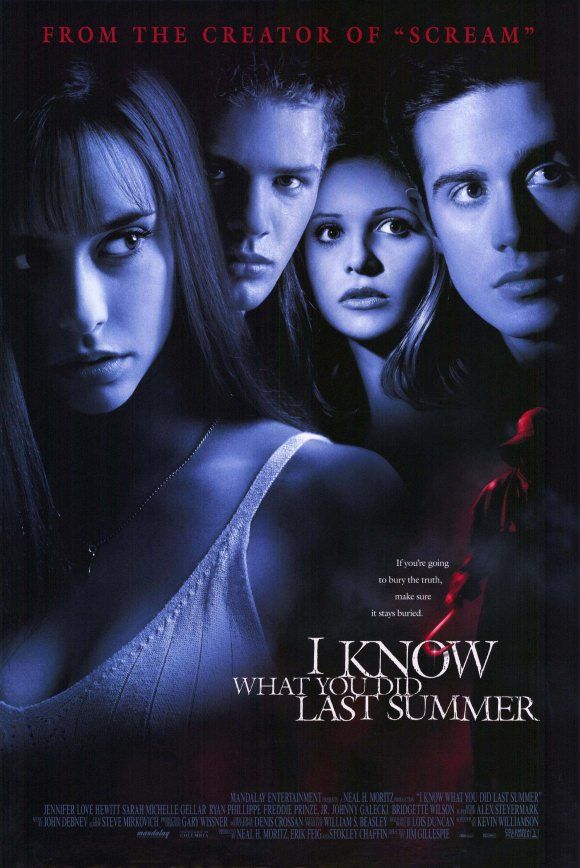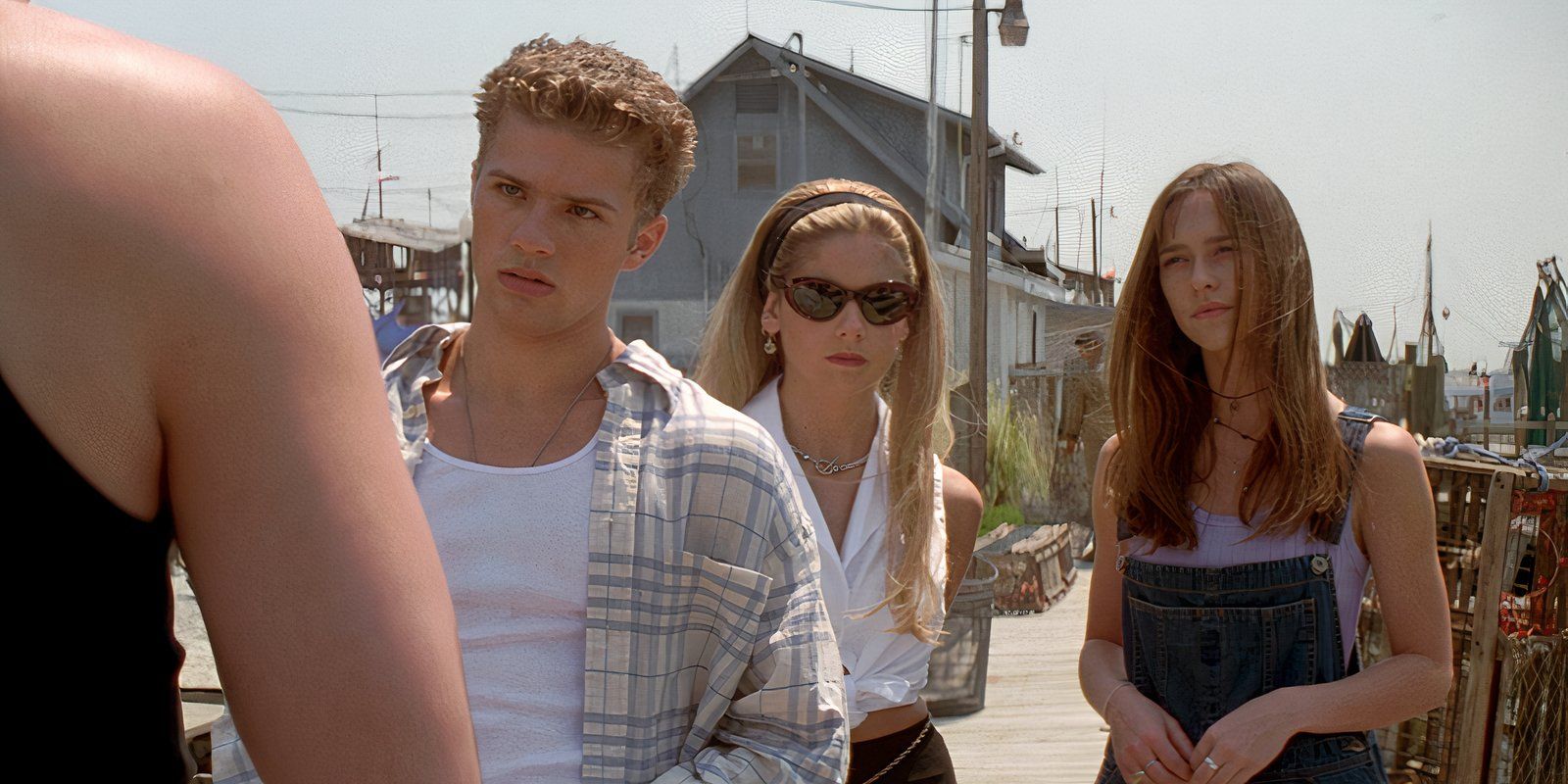Warning: Some SPOILERS lie ahead for I Know What You Did Last Summer!
The ’90s marked a revolutionary shift for the horror genre as filmmakers started to focus on the slasher formula, thanks in large part to Scream‘s success. One of the keys to that movie’s success was writer Kevin Williamson, who not only went on to pen its direct sequel, but also found success with 1997’s I Know What You Did Last Summer. Unfortunately, that success is far more of a financial one than a critical one, and some 27 years later, it’s pretty clear why reviewers weren’t so kind to it.
Loosely based on Lois Duncan’s 1973 novel of the same name, I Know What You Did Last Summer focuses on four high schoolers who inadvertently run over a person and dump them in the ocean, believing them to be dead. The main thrust of the story picks up a year later, with the group all having gone their separate ways, and as Jennifer Love Hewitt’s Julie James gets a note from someone claiming to know what the group did, they are all stalked by a mysterious figure in a fisherman’s suit who wields a hook.
The Slasher Slant On The Book Proves Far Too Simplistic
More Like I Know What You’re Doing In Every Scene
As previously noted, Williamson takes a pretty liberal approach to adapting Duncan’s novel, adding a whole slew of characters to the I Know What You Did Last Summer cast with the goal of upping the potential body count. Additionally, he adds a subplot regarding a character having been blackmailed into dying by suicide, which is meant to be a red herring of potential suspects. Though hinting at characters being a slasher killer is a necessary element of the subgenre’s formula, it’s also one that could be handled far more subtly than how Williamson does it here.
Even the killer’s actions don’t really make a lot of sense as I Know What You Did Last Summer‘s storyline progresses.
A lot of the choices made by the characters don’t feel natural; rather, they’re a screenwriter drumming up unnecessary conflict to pad out the plot. The romantic subplot between Julie and Freddie Prinze Jr.’s Ray is arguably one of the biggest examples of just how poorly fleshed-out and overstuffed the movie feels at times, with little-to-no chemistry or evolution being felt from their first reunion after having broken up to the final moments, in which they spew bizarrely intellectual dialogue, only to be seen on the phone talking like high schoolers in love for the first time.
The characters’ actions to escape the killer often prove hilariously bad. Ryan Phillippe’s Barry nearly being run down by his own car has all the tension sapped out of the scene when you realize he’s making no effort to go left or right to duck into the fronts of the nearby storefronts on the narrow road. Similarly, an entire crowd of people stopping Sarah Michelle Gellar’s Helen from saving Barry and telling her to calm down despite her cries of murder is such a dumb hurdle and, again, unnecessary conflict.
Even the killer’s actions become absurd as the storyline progresses. One moment, The Fisherman is plenty happy to be a meticulous stalker, slow-walking in the vein of Michael Myers and doing little things to toy with the group, while the next he’s suddenly driven to outright murder his prey, even in broad daylight. While the aforementioned blackmail subplot twist was likely meant to set up his atypical slasher tendencies, it still doesn’t make a lot of sense in the grand scheme of things.
Jim Gillespie’s Direction Starts Great & Devolves To Mediocrity
The Kill Scenes Are Particularly Hard To Watch
While Williamson may have quickly redeemed himself with the success of Scream 2 and Dawson’s Creek, director Jim Gillespie didn’t really have the same luck after I Know What You Did Last Summer, and the movie is kind of good proof as to why. The opening moments of the film are certainly gorgeous to look at as the camera sweeps through the rocky cliffs of California, standing in for North Carolina, and the campfire scene with our four main characters is also very well-shot. It’s everything after the opening act that becomes a problem.
Helen and Barry’s deaths, in particular, are terrible…
When you’re making a slasher movie, one of the most important things to do is to make sure the kill scenes look good, and yet nearly all the film’s kills are hard to watch. The camerawork becomes incredibly shaky, the editing thoroughly choppy and the actual looks at the dead bodies far too minimal to be effective. Helen and Barry’s deaths, in particular, are terrible. While the start of their sequences has a solid style, we barely see any of them when it comes time for them to die, almost making it hard to believe they’ve actually been killed off.
This proves even more frustrating when looking at the first kill scene of the movie — Johnny Galecki’s Max. Filling the room he’s in with steam from the seafood-cleaning pots adds a nice layer of tension to the sequence, as we’re not sure from which direction the killer will come, and the actual hook to his mouth feels appropriately brutal. And yet, despite the hook still being the killer’s main weapon for the rest of the film, pretty much no other death proves as shocking to watch, even when a few are the main characters.
Half Of The Main Cast Are In Top Form
The Other Half Are Not As Engaging For Very Different Reasons
I had hoped that when the slasher thrills aren’t working the cast could at least elevate the material, and that, unfortunately, only proves half true for I Know What You Did Last Summer. Hewitt has a truly gripping screen presence as she carries the final girl torch, not only capturing Julie’s underlying intensity, but also believably tapping into her layer of trauma from the inciting car accident at the movie’s start. Gellar is also truly incredible as Helen, subtly layering in the character’s sadness over her grand post-high-school dreams not coming to fruition.
It’s sadly the men of the cast that prove to be somewhat underwhelming. Part of it feels like the script could be blamed for it, as Phillippe captures Barry’s rich boy superiority well, but does nothing else with the role. Meanwhile, Prinze Jr.’s mild-mannered Ray never has the right energy for any given scene, though whether that’s on him or the direction he was given is hard to say.
At one point in time, I would look back on I Know What You Did Last Summer and marvel as to why it wasn’t better received, as it’s still a generally enjoyable time. But now, when any kind of thought is put into the movie’s logic, script, and direction, it becomes apparent why a diehard slasher genre fan like myself would ignore its faults. In the grand scheme of things, at least it’s not nearly as bad as either of its sequels, and still one of the better efforts of the genre of its era.
I Know What You Did Last Summer is now streaming on Netflix.

- The movie’s pace is steady enough.
- Jennifer Love Hewitt and Sarah Michelle Gellar are fantastic.
- The slasher genre thrills work enough.
- It plays far too strictly with the slasher formula to feel unpredictable.
- There are a lot of leaps and gaps in logic, and unnecessary tension added to pad out the plot.
- The direction during the kill scenes is pretty awful.
- Ryan Phillippe tries too hard, and Freddie Prinze Jr. doesn’t try hard enough.

